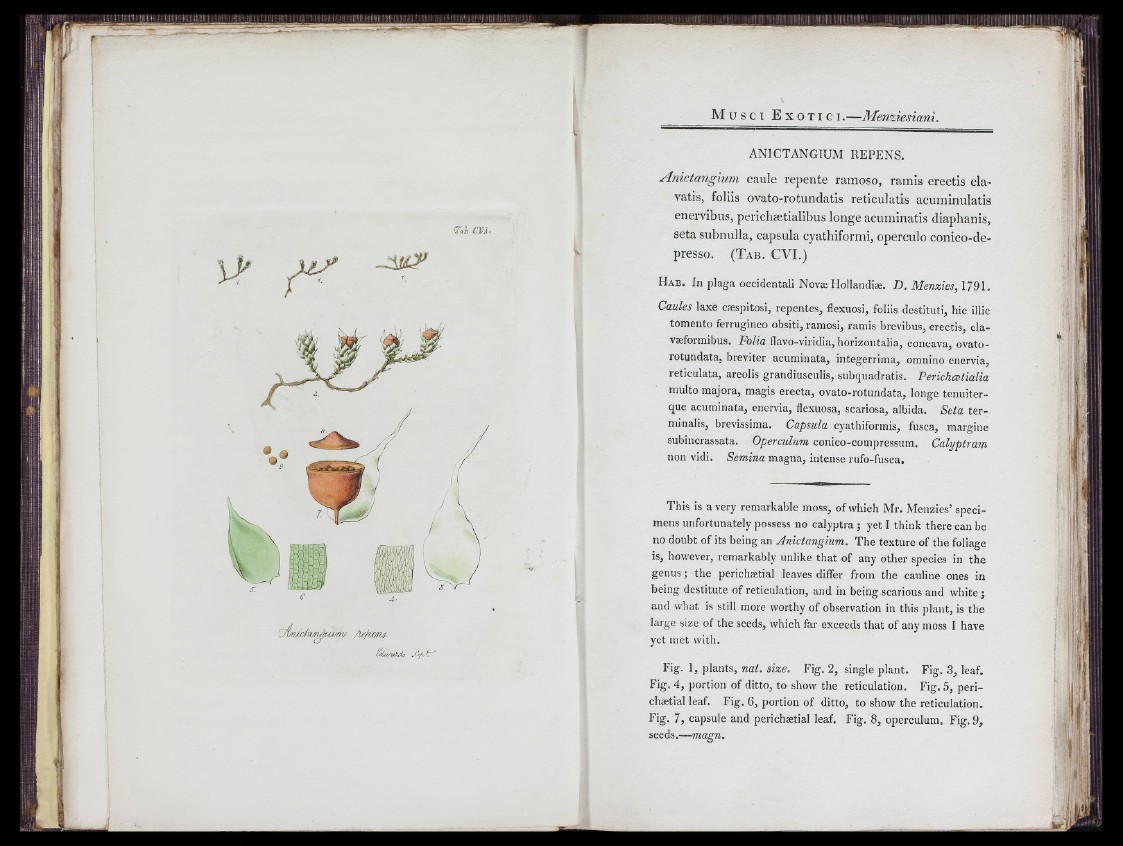
f r
II
T t i CVh
- i H A
■
.ifX
ANICTANGIUM REPENS.
A n ic ta n g iu m caule re p e n te ram o so , ram is erectis cla-
vatis, foliis o v a to -ro tu n d a tis re tic u la tis a c um in u la tis
en ervibns, p e richæ tia lib u s lo n g e a cum in a tis d iap h an is,
se ta su b n u lla , c ap su la cy a th ifo rm i, operculo conico-de-
p re sso . (T a b . C V I .)
Hab. In plaga occidentali Novæ Hollandiæ. B . Menzies, 1791.
Caules laxe cæspitosi, repentes, flexuosi, foliis destiniti, hic illic
tomento ferrugineo obsiti, ramosi, ramis brevibus, erectis, cla-
væformibus. Folia flavo-viridia, horizontalia, concava, ovato-
rotundata, breviter acuminata, integerrima, omnino enervia,
reticulata, areolis grandiusculis, subquadratis. Perichætialia
multo majora, magis erecta, ovato-rotundata, longe teniiiter-
que acuminata, enervia, flexuosa, scariosa, albida. Sela terminalis,
brevissima. Capsula cyathiformis, fusca, margine
subincrassata. Operculum conico-compressum. Calyptram
non vidi. Semina magna, intense rufo-fusca.
This is a very remarkable moss, of which Mr. Menzies’ specimens
unfortunately possess no calyptra ; yet I think there can be
no doubt of its being an Anictangium. The texture of the foliage
is, however, remarkably unlike that of any other species in the
genus ; the pericheetial leaves differ from the cauline ones in
being destitute of reticulation, and in being scarious and white
and what is still more worthy of observation in this plant, is the
large size of the seeds, which far exceeds that of any moss I have
yet met with.
Fig. 1, plants, nat. size. Fig. 2, single plant. Fig. 3, leaf.
Fig. 4, portion of ditto, to show the reticulation. Fig. 5, peri-
chaetial leaf. Fig. 6, portion of ditto, to show the reticulation.
Fig. 7, capsule and perichaetial leaf. Fig. 8, operculum. Fig. 9,
seeds,—magn.
d in